 |
 |
Children
were not always viewed as they are today. We found it shocking the
manner in which some children were treated. It helped us to appreciate
the real need for the State School to be started. Let us share some
of our finding with you.
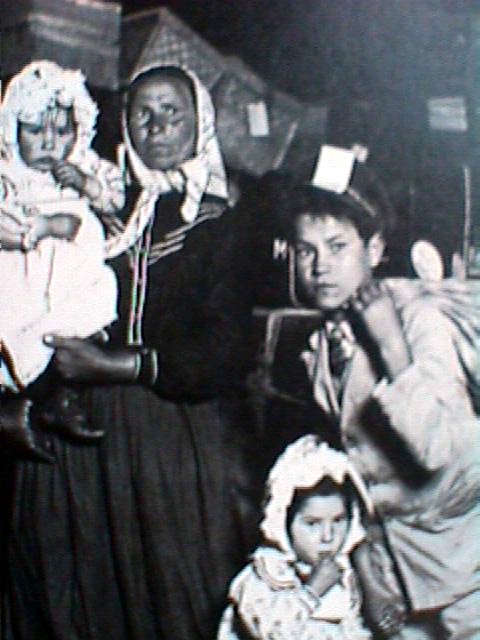 By the 1840’s immigration from European nations brought thousands of people
to the United States. Often they were looking to freedom, work, homes,
education, and a place to begin a new start. The potato famine in
Ireland brought many of sick or dying immigrants to this country. Some
children from Ireland, left their country with both of their parents only
to get to the United States as an orphan. Many of the cities in the eastern
part of the United States became very overcrowded. Most immigrants
would accept any job they could get. Parents would have to work long
hours for little pay, sometimes they even had all of the children work
with them in a factory, or at home.
By the 1840’s immigration from European nations brought thousands of people
to the United States. Often they were looking to freedom, work, homes,
education, and a place to begin a new start. The potato famine in
Ireland brought many of sick or dying immigrants to this country. Some
children from Ireland, left their country with both of their parents only
to get to the United States as an orphan. Many of the cities in the eastern
part of the United States became very overcrowded. Most immigrants
would accept any job they could get. Parents would have to work long
hours for little pay, sometimes they even had all of the children work
with them in a factory, or at home.
Housing was poor. A whole family, including aunts, uncles, and grandparents might all live together in very small cramped apartment. Many did not have indoor plumbing, running water or refrigerators to keep food cold. During the summer there was no air conditioning so it was very hot in these homes. Along with that in the winter there was no central heat so even inside was terribly cold. Because of all of the overcrowding, by the time a child was four years old, they could be turned out on the street to find their own homes and money. It was not unusual to see children begging for coins, selling flowers, matches, newspapers or even dirty rags to 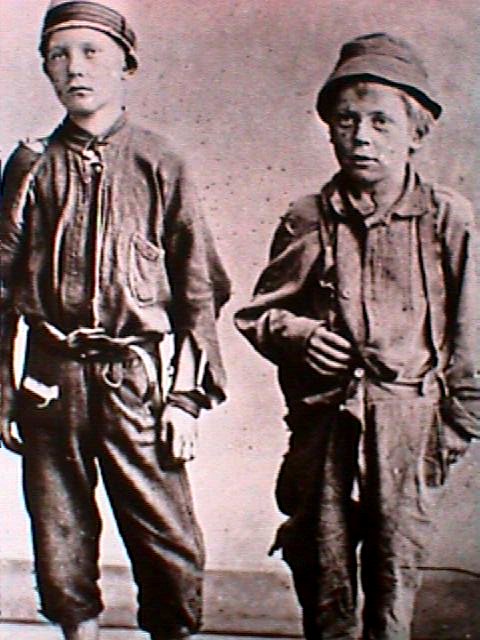 people on the streets. Others, worked in the factories. Conditions
were dangerous. Children were required to work the same amount of
time as the adults that were employed. Most work days were twelve
to fifteen hours long. Children were not paid the same wages as adults.
Sometimes, they were not paid at all, but got a place to sleep and one
meal a day. There was no insurance to cover health care and no disability
if they got hurt and could not work. Children usually did the most
dangerous jobs. There were so many homeless children on the streets,
that employers felt that if one couldn’t work, there were hundreds of others
to fill their place.
people on the streets. Others, worked in the factories. Conditions
were dangerous. Children were required to work the same amount of
time as the adults that were employed. Most work days were twelve
to fifteen hours long. Children were not paid the same wages as adults.
Sometimes, they were not paid at all, but got a place to sleep and one
meal a day. There was no insurance to cover health care and no disability
if they got hurt and could not work. Children usually did the most
dangerous jobs. There were so many homeless children on the streets,
that employers felt that if one couldn’t work, there were hundreds of others
to fill their place.
Children who could not find jobs or were too young to work might steal, become pickpockets, or join gangs. A child of seven years could be tried as an adult in the court of law at the time. At this time, there were still public hangings for criminals. Many times, this would include street children who might steal food to feed themselves. Even though there was public schooling, it was not mandatory for children to go to school. Older children might stay home to care for younger brothers and sisters, or they might have to go work to help support the family. 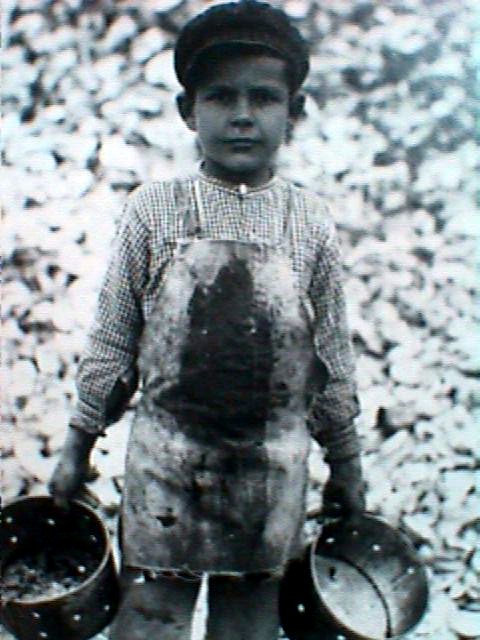 City
governments did little to help the poor or the homeless children.
In some towns, the officials would actually sell children or entire families
to the lowest bidder. This was often done to provide workers for
employers. The purchase would require that the child or family would
work for one year for the employers without pay. In return, the employer
would give them a place to live, food, and very little in the way of pay. City
governments did little to help the poor or the homeless children.
In some towns, the officials would actually sell children or entire families
to the lowest bidder. This was often done to provide workers for
employers. The purchase would require that the child or family would
work for one year for the employers without pay. In return, the employer
would give them a place to live, food, and very little in the way of pay.
The need was seen to have almshouses, poorhouses, workhouses, county farms and poor farms built to help out those in need. Children whose parents could not support them could turn the child over to these places. But these institutions were full of mentally and physically ill adults. These places were often worse for a child than living on the street. In 1820 the Society for the Reformation of Juvenile Delinquents, was established in New York City. It was a shelter for young boys and girls. Some of he children had committed crimes, others just had no place to live. Children were educated and reformed, then they were bound out to work for farms or as seamen. Even though they did get a very basic education there was no affection or warmth shown to the children. It was a very strict environment for the children who lived there. Charles Loring Brace became the secretary of the Children’s Aid Society in 1853. It is reported that in 1849, the New York Police felt that there was ten thousand homeless children in the city. It was Mr. Brace’s job to organize the improving of living conditions for these children. Children at this time were still not required to attend public schools. That law did not go into effect until 1874, and even then it was not always enforced. Mr. Brace had a huge job ahead of him. For thirty seven years he worked to better the living conditions of children. He created services to help with the needs of the poor, hungry, sick, homeless and disabled children. He wrote 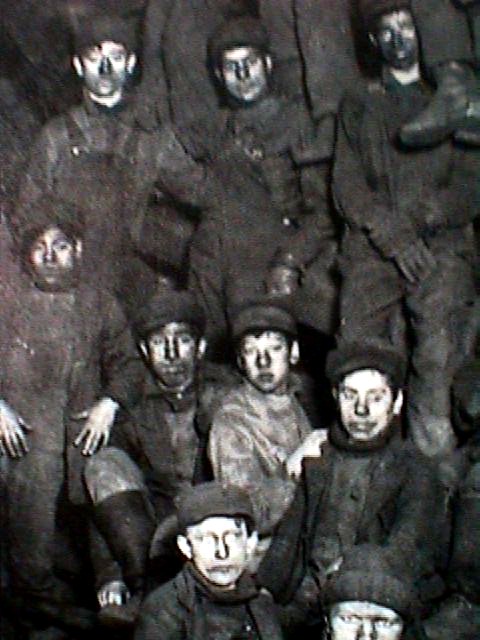 books,
newspaper articles, and gave public speeches on the needs of children.
He condemned the use of children in dangerous jobs. Mr. Brace worked
hard to change how people of the time felt about children. He worked
to make people understand how to best help children to grow and develop.
He developed schools where children could get an education, lunches, shoes,
and clothing. He also found foster homes for thousands of children.
Mr. Brace sent doctors to the homes of sick mothers and children.
He also set up summer homes for families with sick members or those who
were crippled. The first free kindergarten in New York City was also
the result of Mr. Brace’s hard work. books,
newspaper articles, and gave public speeches on the needs of children.
He condemned the use of children in dangerous jobs. Mr. Brace worked
hard to change how people of the time felt about children. He worked
to make people understand how to best help children to grow and develop.
He developed schools where children could get an education, lunches, shoes,
and clothing. He also found foster homes for thousands of children.
Mr. Brace sent doctors to the homes of sick mothers and children.
He also set up summer homes for families with sick members or those who
were crippled. The first free kindergarten in New York City was also
the result of Mr. Brace’s hard work.
During the Civil War, he provided a safe place for African American children to stay. Many people blamed African Americans for the war and children were often the targets of violent attacks by adults. He also stopped the practice of selling children from poor European countries into indentured service. Still the number of homeless children increased. Mr. Brace felt that a new program was in order. He came up with the idea of “placing out”. Children would be put on trains to head to western states where they could be placed in good Christian homes. Three times a month, about thirty children were put into groups, given new clothing, maybe a small suitcase, and put on trains to placed in homes across the country. (See orphan trains) 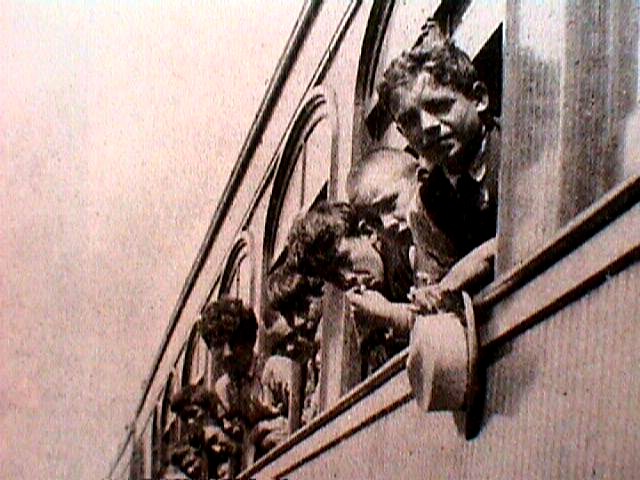
Cobblestone; the History Magazine for Young People;
The History of Labor
Cobblestone; American History for Kids; Orphan
Trains, Traveling West to a New Life
Kids At Work; Lewis Hine And the Crusade Against
Child Labor, Russell Freedman
Liberty for All, A History of US, Joy Hakim
Photo of Orphan Train courtesy of:
Photos of Immigrants with no Father, Little Boy
Working, Young Coal Miners courtesy of:
Photos of Homeless Boys Courtesy of:
|